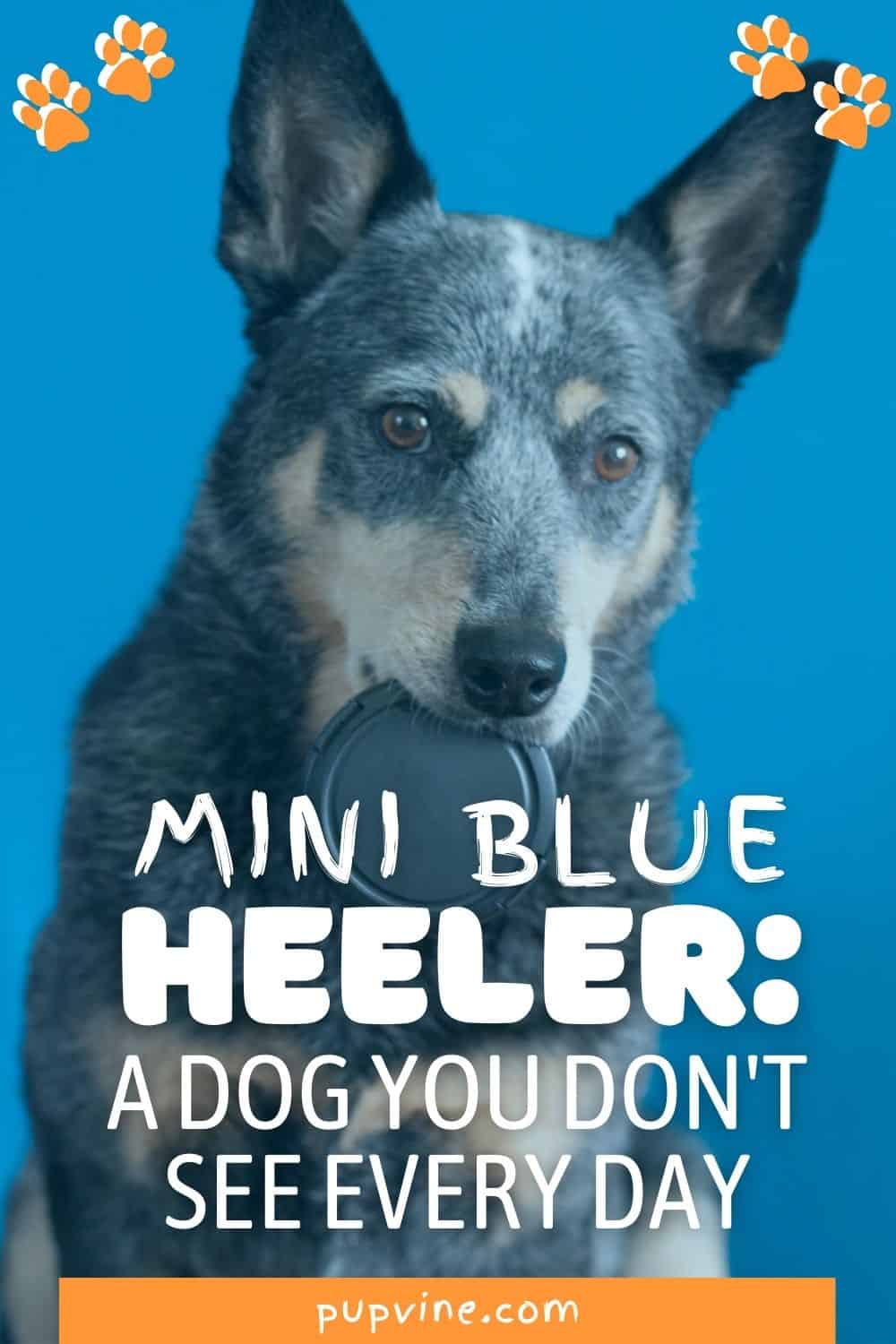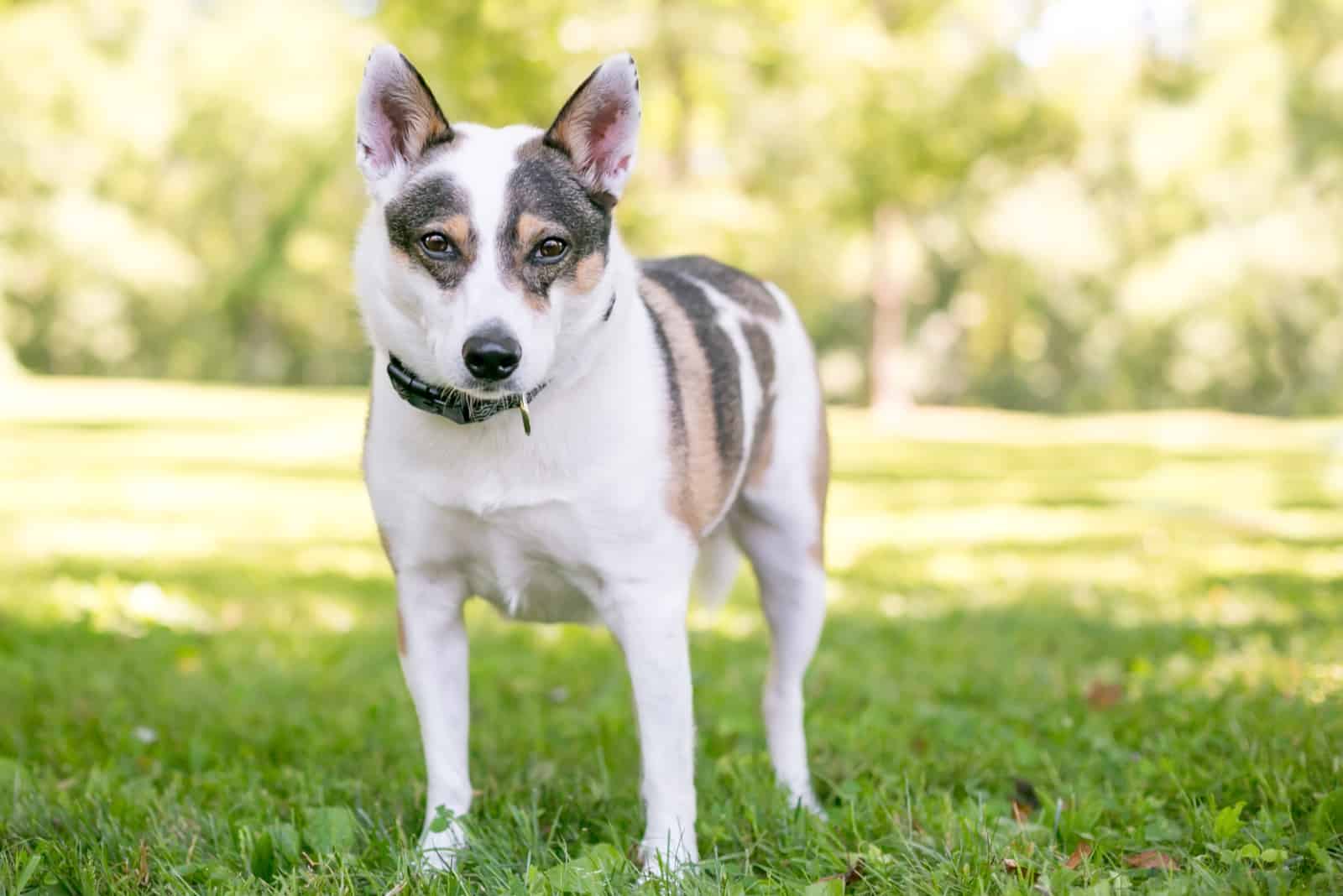There are many herding dogs, but rarely are any as special as the Mini Blue Heeler. But, what’s so special about them? How come they’re different from regular Blue Heelers? Are they purebred?
Well, for starters, it’s their unique blue coat that sets them apart, followed by their compact size. Still, don’t let this fool you – they’re not lapdogs! They’re energetic working dogs that need their time out and about.
Hard to find, but absolutely worthy every penny – this is our dog of the day! Keep digging to find out more interesting facts about the Mini Blue Heeler!
The Origins Of The Breed: How We Got The Mini Blue Heeler
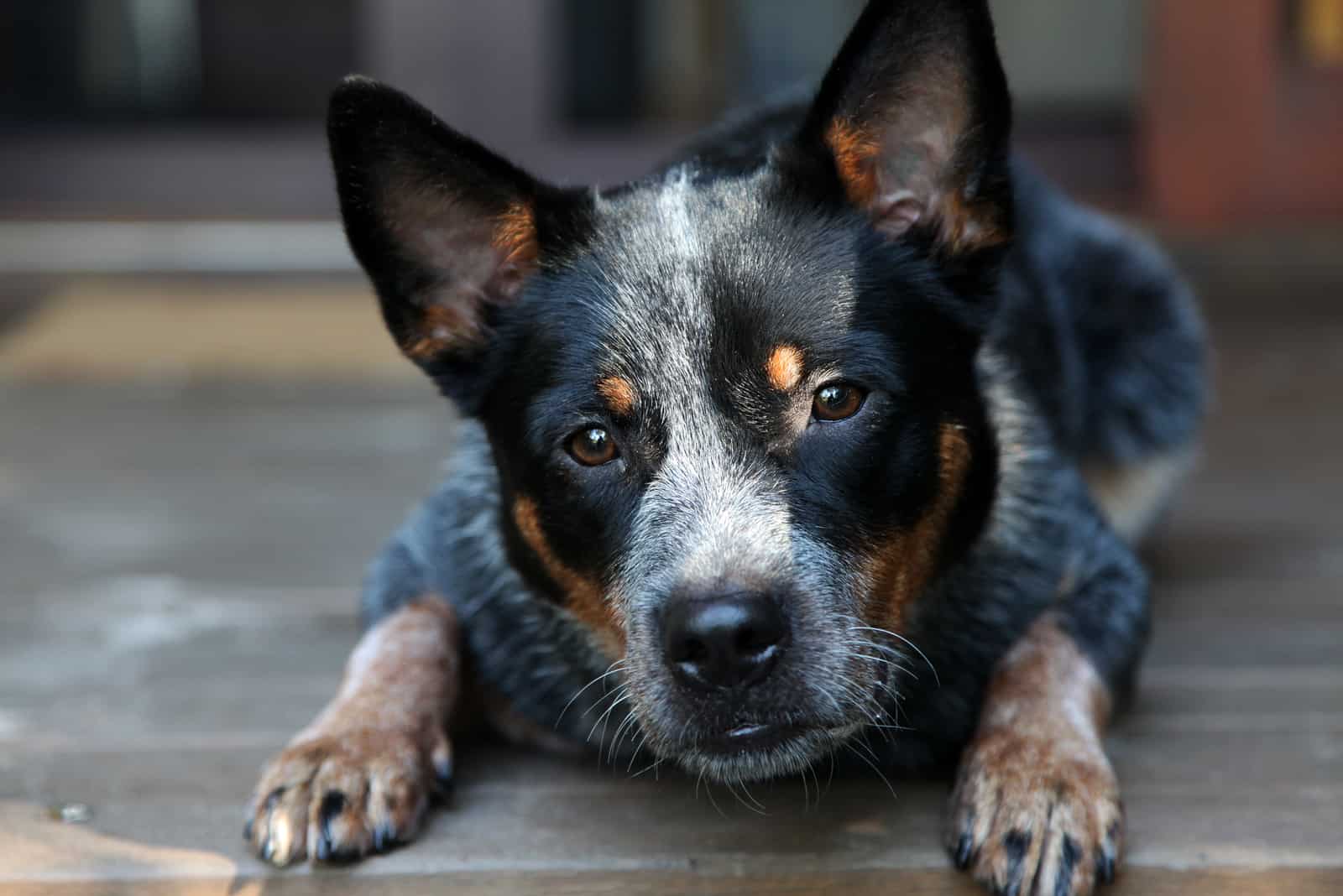
A Blue Heeler is what we call the Australian Cattle Dog. They come from Australia, of course! The past year has shown us this dog breed is stepping out of the shadows and reaching for the stars. The Blue Heeler’s popularity is mostly because of breeding it with other dog breeds.
Crossbreeding produces puppies of different sizes and appearances. This is how our Mini Blue Heeler was created.
Usually, this particular mix comes from the Aussie Cattle Dog and another smaller breed, for example, the Chihuahua. Still, cases of breeding the tiniest dogs from the littler to get the Mini Blue aren’t that rare. This way of breeding ensures full-blooded Blue Heelers in the future.
The Mini Blue Heeler doesn’t have a rich history, but the Blue Heeler does! Both dog breeds are a mix that comes from a combination of native Dingoes and Collies or other herding dogs. It’s the blue coat version that gives them the name ‘Blue.’
However, these pups are also known as Queensland Heelers or Australian Heelers, so don’t let that confuse you. All three dogs are the same!
The Australian Cattle Dog puppies or the Blue Heeler was created back in 1840 by George Elliot. Elliot’s breeding ethics made him popular among Australian cattlemen and ranchers. Thus, the Blue Heeler became recognized as a cattle herder.
Interestingly enough, this dog breed made lots of contributions to Australia’s beef industry, a major branch of the continent’s economy. Originally British imports coming from a breed named Smithfield, these pups were bred to adapt quickly to the Australian environment.
Lots of breeding with different herding dogs resulted in the creation of the Australian Cattle Dog. The dog was designed to work and to stand up straight in all weather conditions. Jack and Harry Bagust were to blame for creating this breed by breeding a Dalmatian and the Australian Cattle Dog.
The mixed-breed showed good working ability and loyal traits, which are cherished the most.
Although the dog breed has been with us ever since the 1840s, the American Kennel Club (AKC) only recognized the breed in 1980. They also became charter members of the AKC Herding Group, founded in 1983.
Blue Heelers are pretty low on the popularity ladder, but they’re climbing up steadily.
Mini Blue Heelers are unique dogs that deserve to be treated the right way. What better way than buying some of these awesome products fit for them?
[table id=198 /]
Looks Do Count: The Mini Blue Heeler’s Characteristics
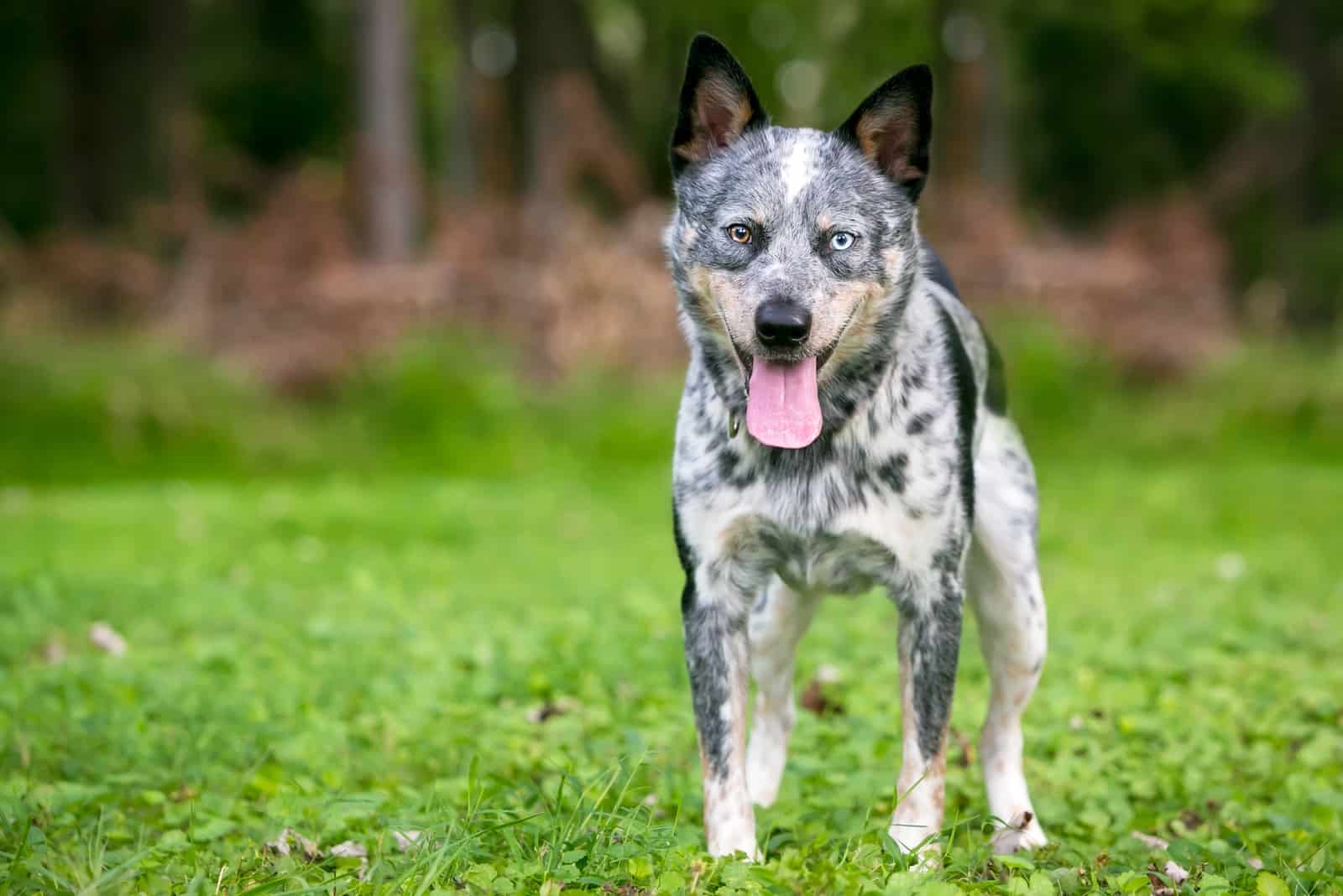
Miniature Blue Heelers have become almost as popular as the “original” Blue Heeler dog because of their toy size. Still, this doesn’t change most of their characteristics. The amazing energy and work ethic of sheepdogs remains ever-present.
The only thing that sets these two dogs apart is their size. The Miniature Blue Heeler is usually miniature to toy size. There is no difference between the genders; both males and females are around 11–15 inches tall and weigh 12–25 pounds.
Some breeders even have an “ideal” standard for the Mini Blue Heeler: 13–15 inches and 15–20 pounds.
Read More: Blue Heeler Growth Chart
If you’ve never seen a Blue Heeler dog in person, let’s just say your Mini Blue Heeler would be similar in size to a Corgi or Dachshund.
Their personality characteristics aren’t that far behind. They’re also similar to the Blue Heeler. These dogs have a bunch of energy to burn, and they don’t take no for an answer. You need to take them out for walks, play, and exercise as much as you can.
Moreover, they’re independent doggos and don’t ask for much attention or cuddles. If you’re looking for a cuddle buddy, keep on looking. The Mini Blue Heeler does love getting positive feedback, but he hates feeling patronized.
Their natural instinct is a tough nut to crack. It simply won’t fade away. Don’t be surprised if you catch your new puppy nibbling or nipping at people’s heels or trying to herd them! But, this behavior does come with some benefits: they make amazing guard dogs!
Why Get A Mini Blue Heeler?
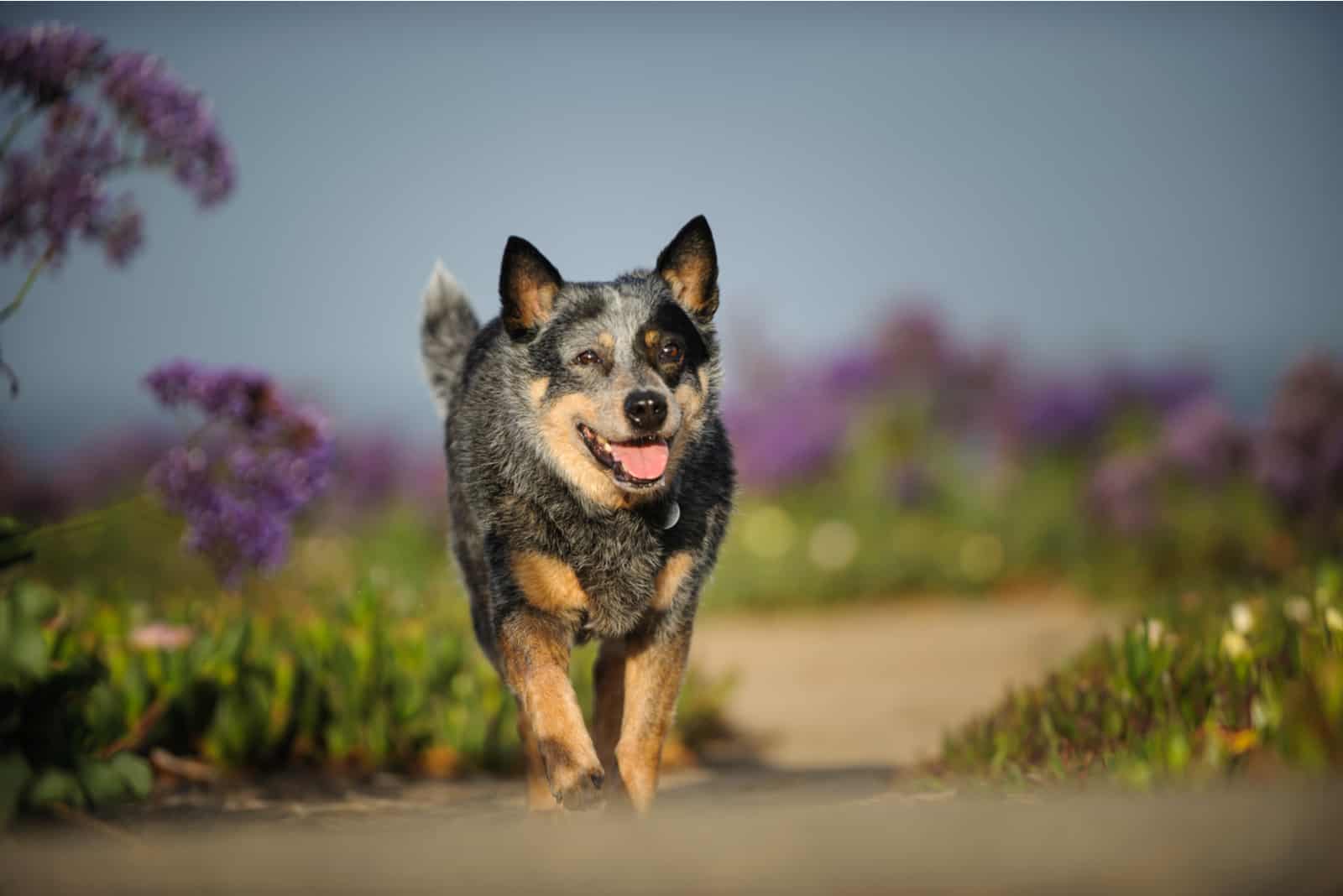
The Mini Blue Heeler is a terrific dog to own and here’s why:
1. They’re quiet and protective
One thing everyone appreciates in the Blue Heeler is their protective nature. They may be small, but their willingness to fight back and defend their owners is astonishing. Their eyes are sharp and don’t miss a thing.
But doesn’t this come with a price? No, it doesn’t! On top of everything, these pooches are almost bark-proof. Seriously, they rarely bark, so there’s one worry less on your list. Your neighbors will be thankful you own one of these dogs.
2. They’re energetic and playful
Outgoing and active people will find the Mini Blue Heeler to be their perfect dog. They love adventures and using up energy on work or play tasks. But what they love most is running around in open fields.
Whichever activity you choose, always keep in mind your dog needs it. It’s not only for fun, but it’s also for their mental and physical health too!
3. They’re intelligent and easy to train
Fear not, the Mini Blue Heeler is as intelligent as their bigger version. Another good trait about Mini Blue Heelers is that they are just as smart as their larger version. If they’re well-trained, they will listen to commands, follow them, and not be destructive.
Being so smart makes the Mini Blue the ideal candidate for proper dog training. Puppies will end being puppies fast and you’ll end up with a smart adult mini Blue Heeler.
4. Grooming them is easy
Let’s face it: grooming takes a lot of time, but it isn’t something you can leave out of your routine. Dogs need to be groomed from time to time to avoid matted hair, knots, skin issues, and infections.
Lucky you, the Mini Blue Heeler has a layered coat that protects them from different elements. The coat has no smell or oily residues. You just grab a brush and start brushing. It will be over before you know it.
5. Love is in the air: a loyal and loving dog breed
Despite choosing to go out and play over staying home and cuddling on the sofa, the Mini Blue Heeler is still a loyal dog. If you treat them well, they will show you love and appreciation. Truth be told, they’re not the most cuddly breed, but they can show love in protection and security.
A pup doesn’t have to cuddle to be a good boy. Playing fetch in the park or going for a walk also qualifies the Mini Blue Heeler to be the best good boy ever!
How Do I Get My Paws On a Blue Heeler?
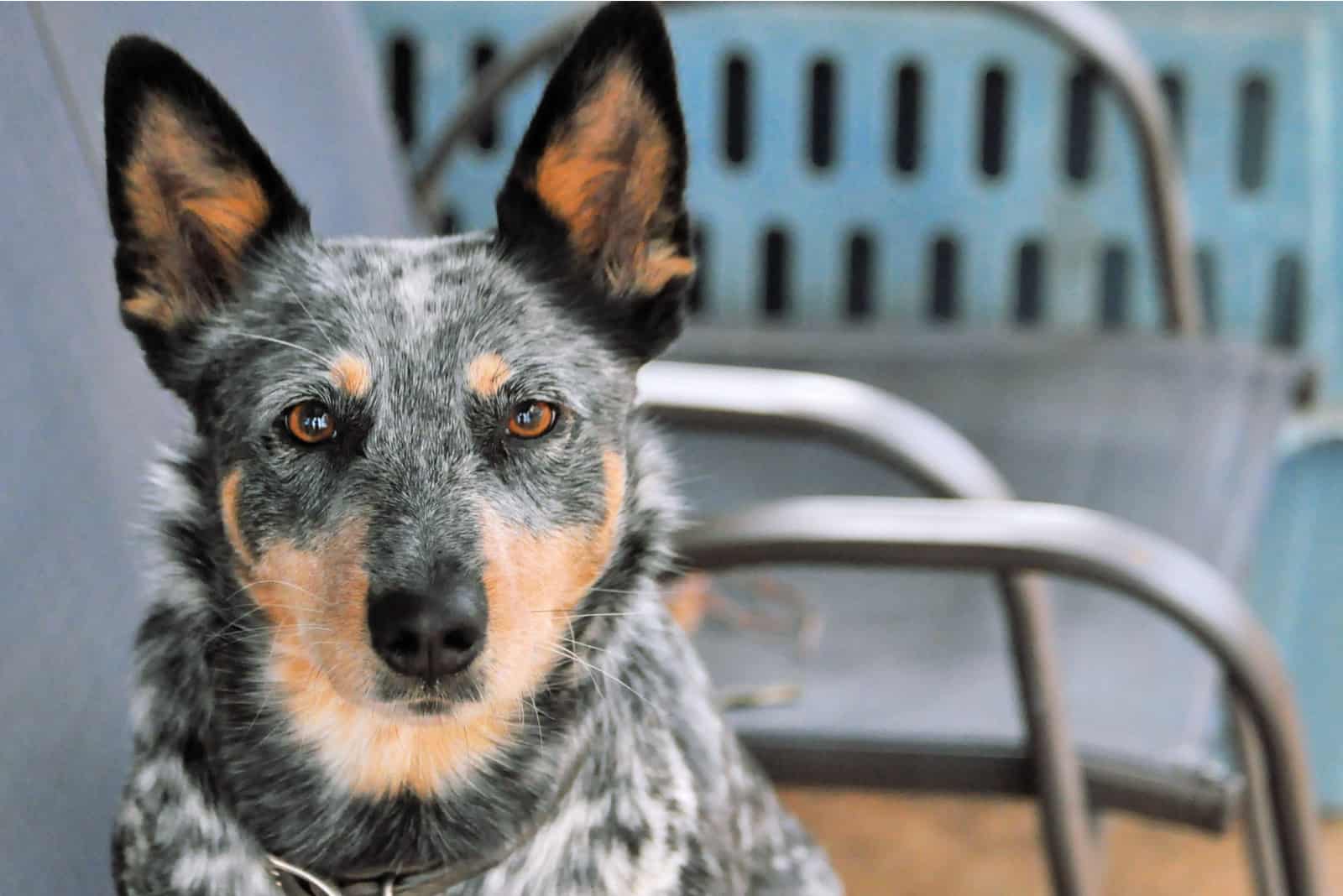
Now that you know how a Mini Blue Heeler looks, it’s time to check out where to get one. The original Blue Heelers are generally easy to find. But, this special little breed might be difficult to locate.
Mini Blue Heeler puppies can be found if you follow these tips and tricks:
1. Go online
Since we live in the digital era, it’s only logical to check the internet first. If you dig deeper on Google, you will find plenty of dog breeders that offer Mini Blue Heelers.
Some breeders even specialize in breeding Miniature Blue Heelers.
The golden rule is to ask for more photos and details about the puppies to avoid being scammed.
2. Search locally
One must never forget to look locally for Miniature Blue Heeler breeders. Who knows where your future Heeler is hiding?! It could be in your local animal shelter, so make a stop there.
Also, when buying from a breeder, check out their positive feedback and ask if you could meet them in person.
Meeting in person and evaluating the puppies should be conducted with every breeder. You never know who’s about to scam you.
3. Meetings
As we mentioned earlier, you should be able to meet the breeder and the puppies with their parents. No matter which dog breed you’re getting, always see the parents first. Seeing the mommy and daddy Heeler will help you get a general idea of how big or small your Mini Heeler puppies will become.
4. Terms and agreements
Once you set your mind on a specific Mini Blue Heeler, don’t hesitate to ask questions, ask for certification, and the return policy if some health problems become uncontrollable and difficult to take on.
Finally, don’t play it too cool. Sign the buying agreement and save yourself from many technical issues.
5. Home prepping
Before the new dog comes home, do the dog proofing first. It’s the same as babyproofing. Remove all problematic objects like knives, throw toys around the place, and start warming up the home so it’s fit for a Miniature Blue Heeler.
Food Habits: What To Feed To Your Blue Heeler
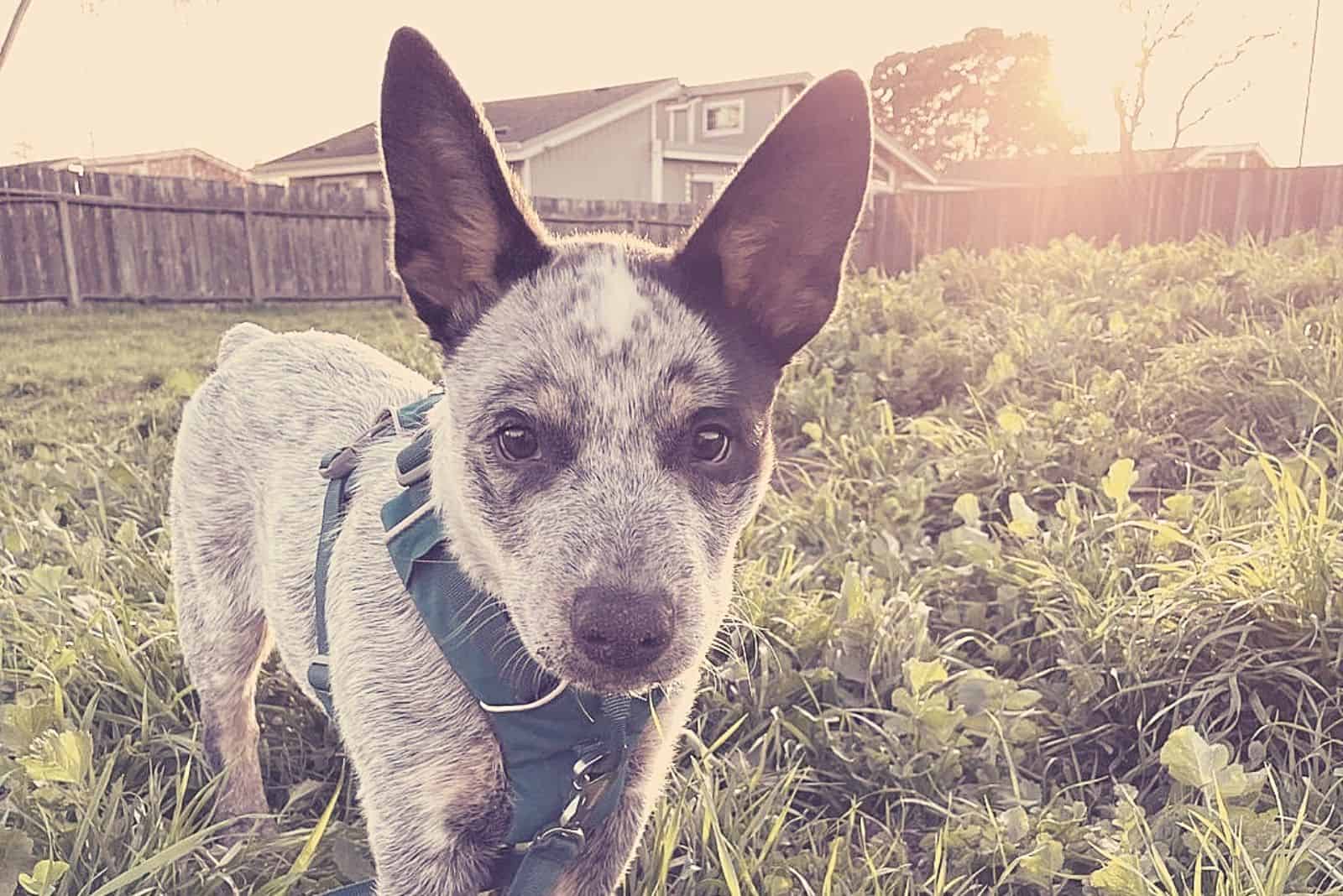
Now that you know how to get your paws on this dog breed, it’s time to learn how to feed it.
Taking care of dogs differs from dog to dog. However, every dog needs high-quality dog food, which you can buy or make yourself.
As long as there are no health issues, no special diet is required. The Mini Blue Heeler can eat just about any dog food if it’s rich in nutrients. If you’re still not sure which one to choose, talk to your vet and have him recommend the right food for your Fido.
The Mini Blue has lots of energy to burn, so he must consume more food. But don’t let them overeat and indulge in food. Control their meals so they stay fit and healthy.
Your mini Blue Heeler can have a bite of your food, but don’t let them ever eat:
• Wasabi
• Pesto
• Hummus
• Paprika
• Pretzels
• Doritos
• Salsa
• Cheerios
• Spam and other junk food items
Exercise And Training
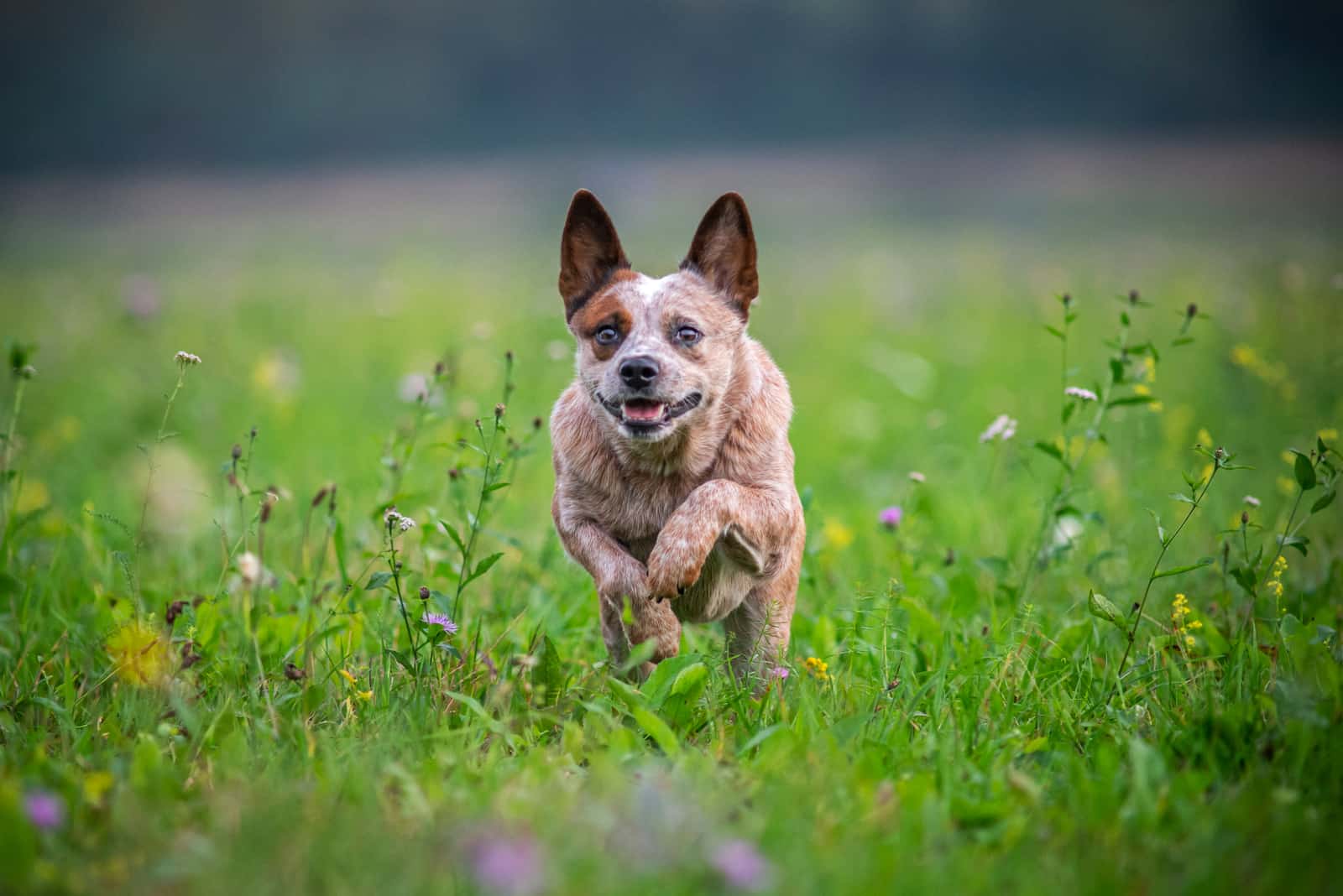
As we mentioned before, these doggos are extremely energetic and smart. They will see right through you if you’re trying to cut down time spent on walkies. You must take them out a lot, hence why they aren’t such good apartment dogs.
If you’re by any chance living in an apartment, now is a good time to let you know you’re getting a jogging buddy too. Now you have no excuses for not working out.
Working out isn’t only a physical activity for the Mini Blue Heeler. It’s a way for them to vent; otherwise, they might become frustrated and destructive. You don’t want chewed table legs, do you?
Since they’re intelligent pups, training should go smoothly. What’s important is to start early and work on socialization and obedience training. You need to teach them how to behave among other dogs and new people. So, be persistent. It will pay off!
These herding dogs need agility training, so add that to your exercising list too! If by any chance an active dog like the mini Blue Heeler refuses to walk, it’s time to visit the vet asap.
Grooming A Miniature Blue Heeler
Finally, some good news! The Mini Blue Heeler doesn’t need much grooming. You’re safe from spending endless hours at the groomer! Their coat is low maintenance. Brush it once a week, and you’re good to go. Bathing should be done once a month, not too often, to keep in the natural oils.
But, they do shed their undercoat twice a year. The intensity of brushing increases as the season progresses. Brush them every few days to remove the dead hair trapped under their coats. Using a short-bristled brush and combing it down right will do magic.
Oh, and don’t forget to regularly trim their nails, clean their ears, and brush their teeth every few days.
A well-groomed pup is a healthy pup!
How Healthy Are Mini Blue Heelers?
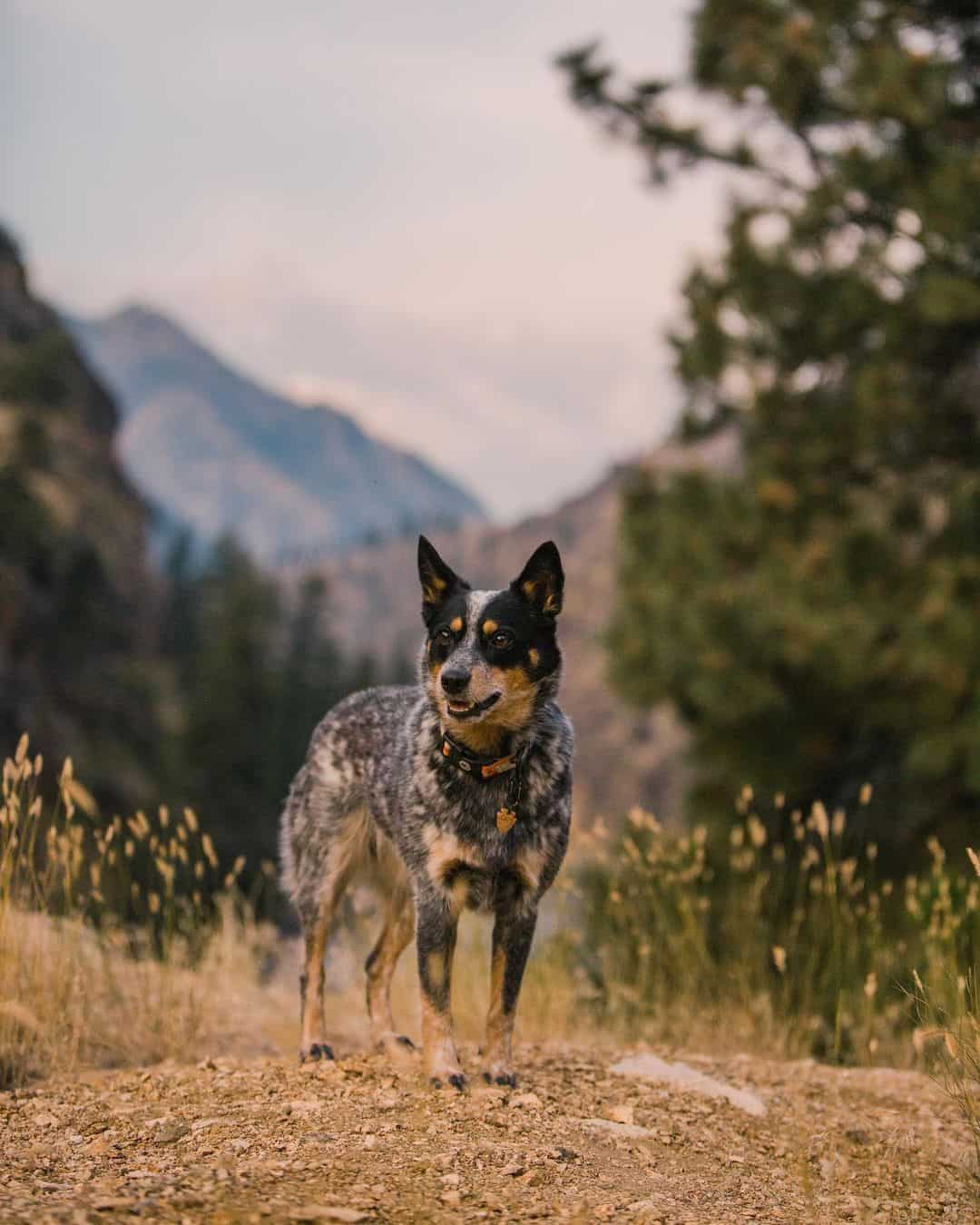
Photo from: @cady_tami
Mini Blue Heelers have similar health risks as Blue Heelers. The most common issues are:
• Deafness. This health issue occurs with many Blue Heelers. Some can’t hear at all, while some can to a degree. If your dog doesn’t respond to you calling it or loud noises, barks excessively, and has trembling ears, he’s most definitely deaf.
• Retinal atrophy. This ailment involves retinal deterioration followed by vision loss. Difficulty seeing at night, cataracts, and widened pupils are symptoms. The condition is progressive and isn’t painful.
• Hip dysplasia. With hip dysplasia, the hip joints aren’t fixed in place, and that causes discomfort. Dogs might hobble or show an aversion to physical activities. The body is usually rigid and tense.
That’s why checking the health tests of both parents and the puppy before buying is a step you shouldn’t skip.
Once you know what your dog is prone to, you can easily prevent any health condition from worsening.
Add regular vet checks and shots to your memo, and your Mini Blue will be a healthy dog.
To Sum Up…
We don’t see unique and unknown dogs getting a boost in their popularity every day. The Mini Blue Heeler is reaching for the stars with every right. They’re companions for life that tick all the boxes.
Do you really need to wait any longer before getting a new family member of this amazing breed? All the other dog owners in the park will be green with envy when they see your magnificent Mini Blue Heeler!
Read Next:
• Red Heeler Vs Blue Heeler: Are They The Same Dog Breed?
• Reasons Why A Blue Heeler Poodle Mix Is For You
